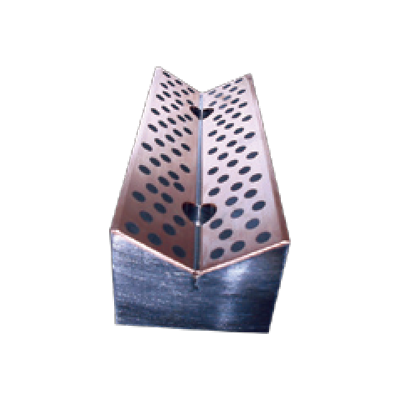The maintenance and replacement of the Composite Metal Self Lubrication Series are indeed superior in terms of delivering stable performance, making these materials an excellent choice for industries requiring reliability and efficiency. Here's how:
The primary advantage of the Composite Metal Self Lubrication Series lies in its self-lubricating nature, which drastically reduces the need for regular maintenance. Traditional components often require constant lubrication through external means like oils or greases to ensure smooth operation. In contrast, composite self-lubricating materials are embedded with lubricating agents (such as graphite, PTFE, or molybdenum disulfide) that continuously release lubrication during use. This reduces friction between moving parts, minimizes wear, and ensures consistent, stable performance over long periods.
The reduction in lubrication requirements leads to lower maintenance schedules, saving both time and costs for operators. For industries with machinery running under continuous operation, such as automotive, aerospace, or manufacturing, this means fewer disruptions and higher productivity, as there are fewer instances of machinery downtime for maintenance.
Composite metal self-lubricating materials are engineered to withstand high wear, heavy loads, and extreme temperatures. The combination of metal and composite lubricating layers provides excellent durability, allowing components to endure rigorous operating conditions without significant degradation. This durability means that components remain operational for much longer than traditional parts that rely on external lubrication, which can degrade or evaporate under harsh conditions.
The stable performance achieved by this durability ensures that machinery operates smoothly without the risk of performance drops due to wear. Over time, this stability reduces the need for frequent part replacements, ensuring operational consistency and reliability.
The design of composite self-lubricating components also simplifies the replacement process. When parts do need to be replaced, they are typically designed to be easily interchangeable. Components such as bushings, bearings, and gears are often modular, meaning that they can be removed and replaced without the need for disassembling large sections of machinery. This modularity reduces downtime during replacement, allowing machinery to resume operation more quickly, maintaining performance stability.

Furthermore, the longer lifespan of self-lubricating components means fewer instances where replacements are needed, contributing to the stable performance of the system over time. Unlike traditional lubricated parts, which may wear out faster due to inconsistent lubrication, the composite metal components provide continuous lubrication, reducing the likelihood of performance variations over their lifetime.
In industries where machinery is exposed to harsh conditions—such as extreme temperatures, heavy loads, or corrosive environments—the stability of performance is critical. Traditional lubricated parts may experience degradation in performance due to the breakdown of external lubricants, resulting in increased friction and wear. However, composite metal self-lubricating materials are designed to perform well in such conditions.
Their corrosion resistance, heat tolerance, and ability to self-lubricate under high loads ensure that the components continue to perform reliably, even in challenging environments. This ability to maintain consistent performance in varying conditions enhances the overall stability of operations, reducing the need for frequent maintenance checks or unplanned replacements.
The combination of reduced maintenance, enhanced durability, and fewer replacements makes the Composite Metal Self Lubrication Series a cost-effective solution over the long term. While the initial cost of these components may be higher than traditional materials, the lower operational costs and extended lifespan provide substantial savings. The stable performance achieved through reduced wear and minimal maintenance requirements ensures that systems continue operating efficiently with less need for intervention, resulting in lower total cost of ownership.
In terms of maintenance and replacement, the Composite Metal Self Lubrication Series offers clear advantages for stable performance. The self-lubricating properties reduce the need for regular upkeep, while the materials’ durability and ease of replacement ensure consistent, reliable operation. These qualities make these components ideal for industries where minimizing downtime and ensuring long-term stability are essential for maintaining operational efficiency and reducing costs.

 English
English Deutsch
Deutsch Español
Español русский
русский

 +0086-513-88690066
+0086-513-88690066




